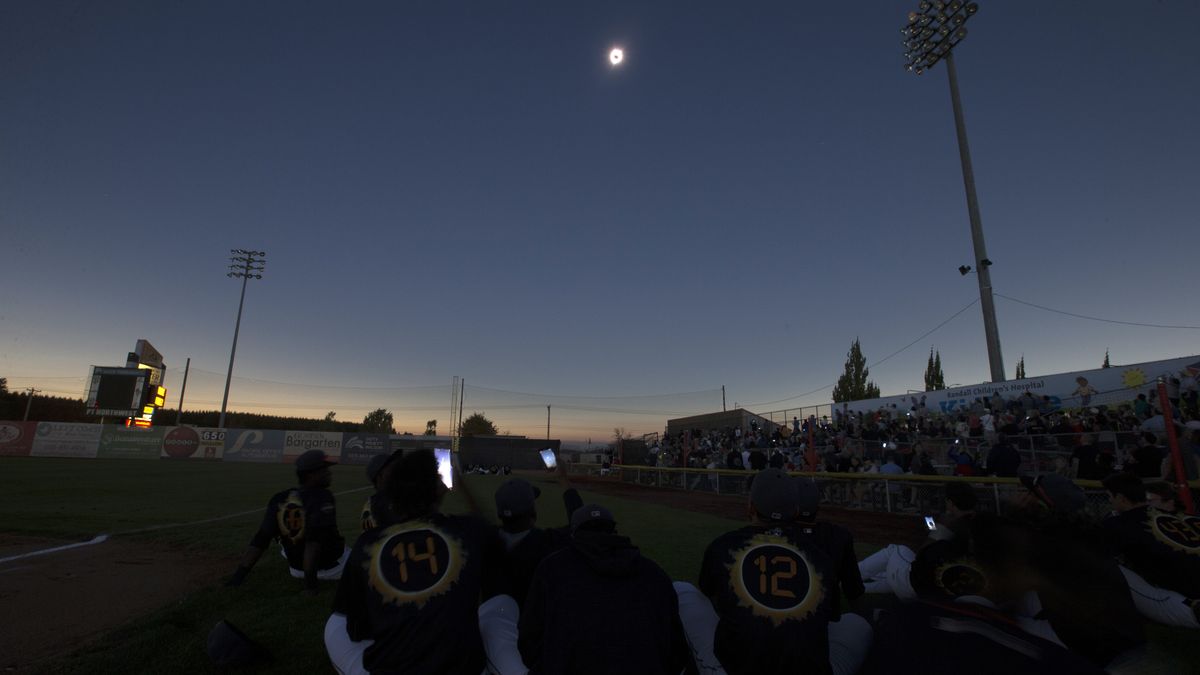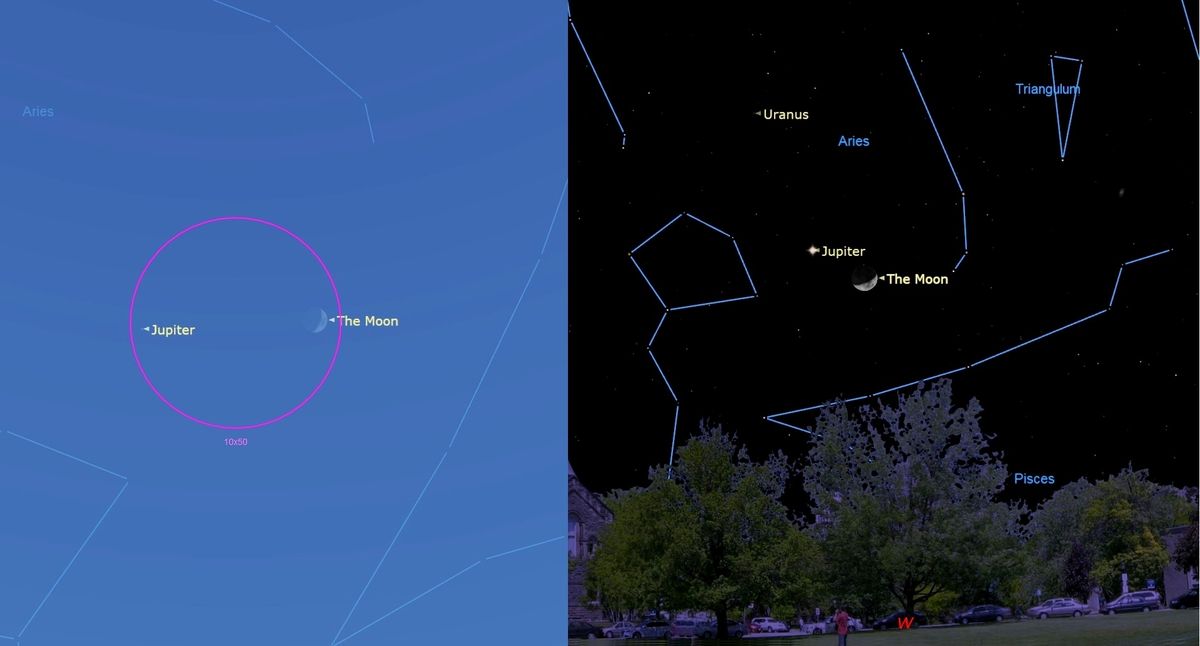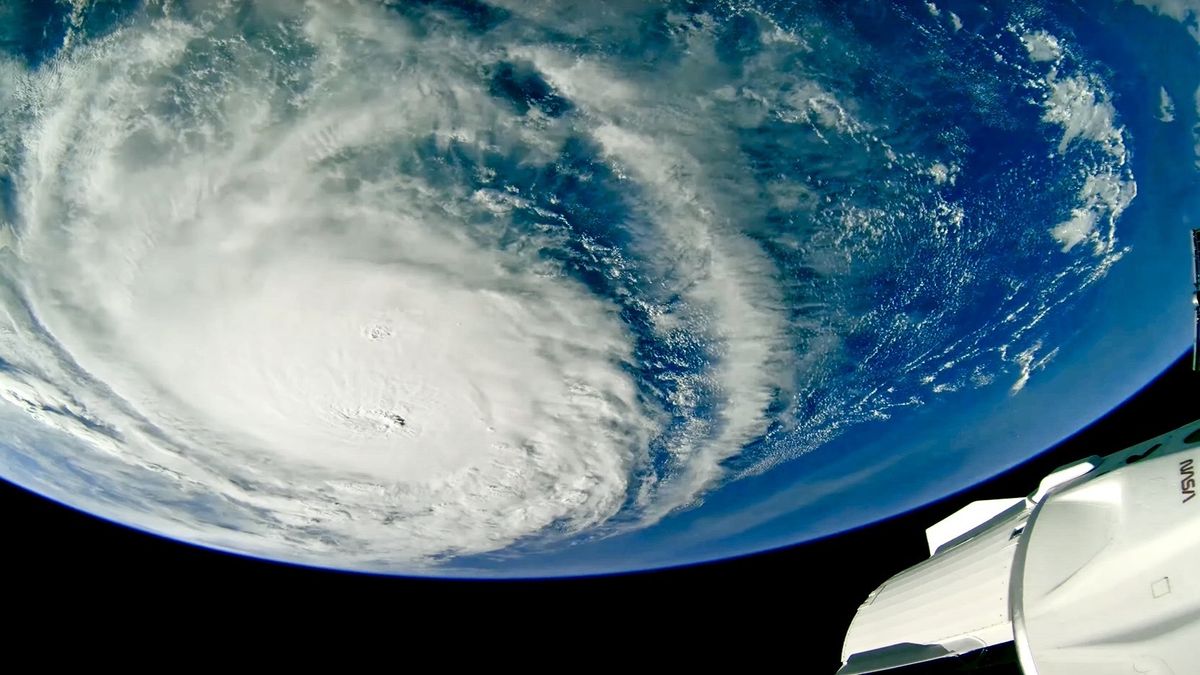The total solar eclipse on April 8 will hit two cities that host Major League Baseball games that day.
During a total solar eclipse, the moon appears almost exactly the same size as the sun in the sky, blocking the entire solar disk for viewers in the path of totality, which, on April 8, 2024, stretches from Mexico, across 15 U.S. states and into southeastern Canada. Along that path lies Arlington, Texas, and Cleveland, Ohio, two cities that will host MLB games on April 8. That’s never happened before in the history of baseball or eclipses.
The Texas Rangers will face the Houston Astros at Globe Life Field in Arlington on April 8, while the Cleveland Guardians will host the Chicago White Sox in their home opener at Progressive Field. Although outside the path of totality, the Yankees, Cardinals, Pirates, Reds and Blue Jays will also host MLB games in cities where at least a 90% eclipse will be visible.
Related: Total solar eclipse 2024: How and where to watch online for free
Totality won’t occur during the games in Arlington and Cleveland, however.
In Arlington, viewers will be able to see a partial eclipse starting at 12:22 p.m. local time. The total solar eclipse will reach its maximum at 1:42 p.m., with totality lasting for approximately 3 minutes and 22 seconds, according to TimeandDate.com. First pitch at Globe Life Field is currently scheduled for 7:05 p.m. local time, following the solar eclipse.
A partial solar eclipse will be visible in Cleveland starting at 1:59 p.m. local time, with the total solar eclipse reaching its maximum at 3:15 p.m. Viewers will be treated to 3 minutes and 50 seconds of darkness during totality, according to TimeandDate.com. While first pitch is scheduled for 5:10 p.m., Progressive Field will open its gates at 2 p.m. so fans can watch the eclipse from the stands, News 5 Cleveland reported.
The April 8 total solar eclipse will also be visible from four cities hosting minor league baseball games, similar to the 2017 total solar eclipse, which cast a shadow across six teams in the path of totality and saw the first “Eclipse Delay” in baseball history, according to WRAL News.
A solar eclipse occurs when a new moon is positioned precisely between Earth and the sun, so that the moon casts its shadow on Earth. During a total solar eclipse, the moon fully covers the disk of the sun, offering the opportunity to view the sun’s outer atmosphere, called the corona.
If you’re planning to watch the solar eclipse on April 8, be sure to check out our guide to observe the sun safely. Everyone observing the partial phases of this eclipse —
and those outside the path of totality — will need to wear solar eclipse glasses and equip cameras, telescopes and binoculars with a solar filter at all times. You can safely view the eclipse without eye protection during totality, but be very careful if you choose to do so: Totality doesn’t last long, and you don’t want to miscalculate the timing and damage your eyes.
Editor’s Note: If you snap an amazing solar eclipse photo and would like to share it with Space.com’s readers, send your photo(s), comments, and your name and location to spacephotos@space.com.



